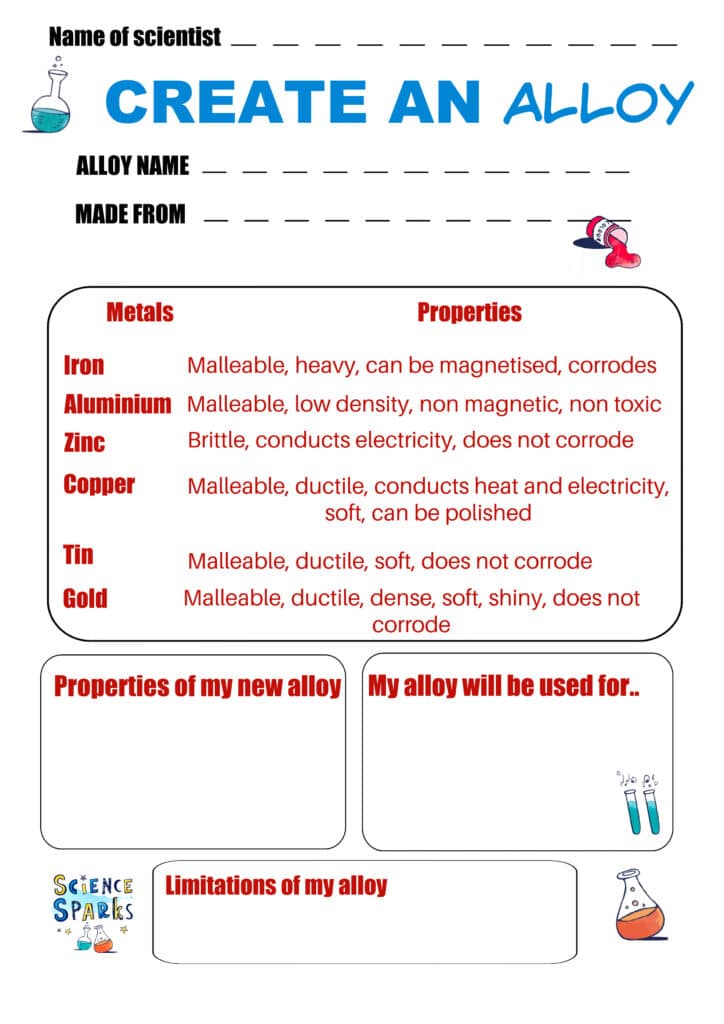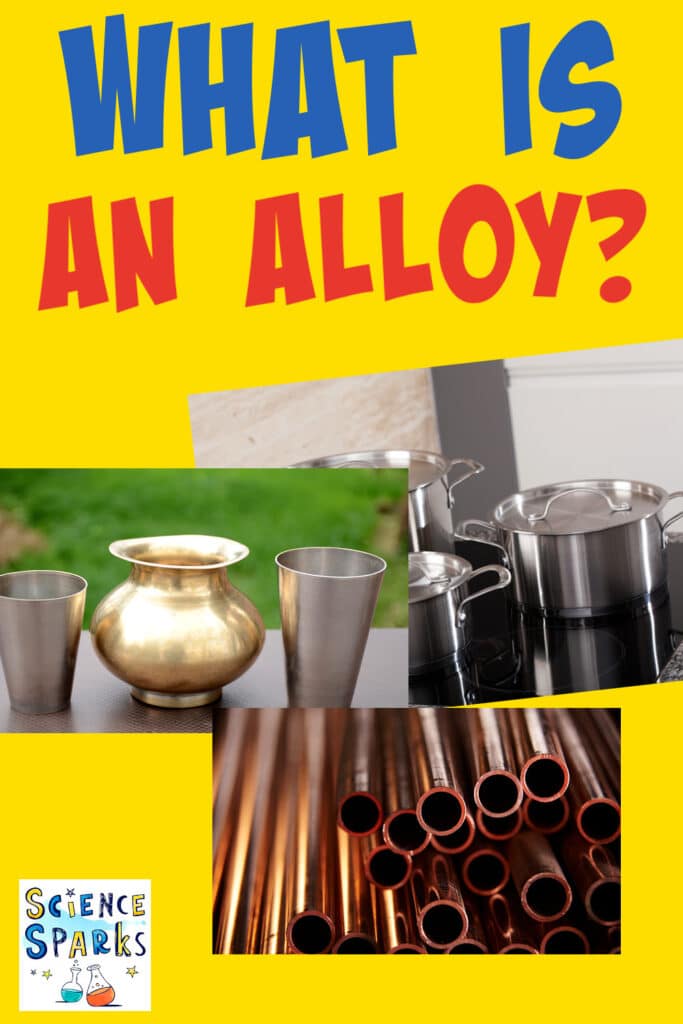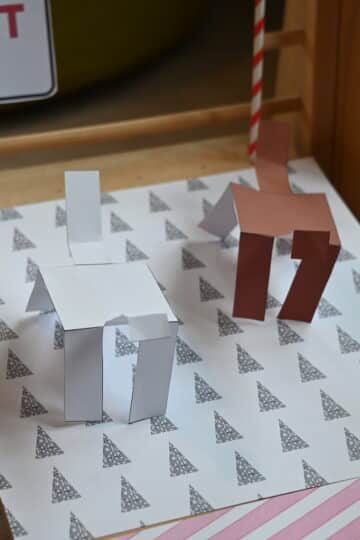Alloys are made by adding another element to a metal. Creating alloys allows scientists to combine the properties of different metals. If a heavy, strong metal is mixed with a light, weak metal in the correct amounts, the result is a light, strong metal.
For example, pure iron is very malleable (its shape can be changed). Adding carbon makes iron stronger as the smaller carbon atoms interfere with the layers of pure iron atoms, preventing them from sliding over each other so easily. An alloy of carbon and iron is called steel.
What is an alloy?
An alloy is a mixture of two or more elements, where at least one element is a metal.
Examples of alloys
Bronze is an alloy of copper and tin.
Brass is an alloy of copper and zinc
Steel is an alloy of iron and carbon.
Stainless Steel - contains iron, chromium and sometimes nickel. The addition of chromium prevents rusting, which is why cutlery is usually made from stainless steel!
Alloys of gold are used to make jewellery. Pure gold is very soft, so metals such as zinc, platinum, silver and titanium are added to make it stronger. 24 carat gold is pure gold, but jewellery made from 24 carat gold marks and scratches easily, so it isn't usually recommended for everyday wear.
One fun way to learn about alloys is to design a new alloy! Students can use this activity to think about the properties of different metals and how they can combine them to make a new super alloy!


Last Updated on September 29, 2023 by Emma Vanstone




Leave a Reply